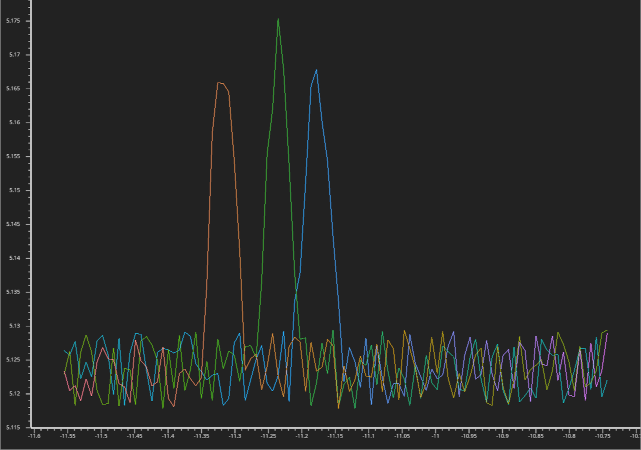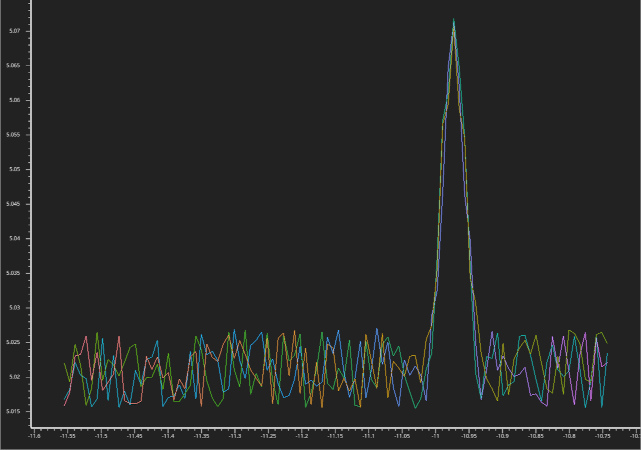Synchronization¶
In this script we will demonstrate how to use lascar to perform leakage synchronisation.
In side-channel, leakages need to be slightly “stackable”. It is very common that, from a trace to another, physical behaviors induce temporal shifting in the leakage.
Leakage synchronization is the name given to the post-processing method you apply on it to make all leakages “stackable”, or aligned.
In the following example we will design an
AbstractContainer that
will generate fake “desynchronized” traces. We will then design a
synchronization method, which will consist in a
leakage_processing
applied to the
AbstractContainer, so
that it will deliver synchronized traces.
from lascar import AbstractContainer, Trace
import numpy as np
# First the SimulatedContainer, on which we will set up the synchronisation:
class SimulatedContainer(AbstractContainer):
def generate_trace(self, idx: int):
# Our leakage will consist in 100 time samples, with a peak randomly
# inserted. Imagine this peak contains the side-channel information.
leakage = np.random.rand(100)
# The offset where the peak will be inserted
offset = np.random.randint(20, 80)
leakage[offset : offset + 11] += np.hanning(11) * 4
value = np.zeros(()) # the value wont be used in here...
return Trace(leakage, value)
Lets create a container with 100 generated traces. We can use the
plot_leakage method
to display the first traces, and note that the leakages are not stackable, as
expected.
container = SimulatedContainer(100)
container.plot_leakage(range(3))

Non aligned traces
Now the synchronisation process.
leakage_procesing
will be used, so we need to design a function, that takes a leakage as input and
returns a transformed leakage.
Actually, we won’t use a function, but a callable class. The reason why we do that, is that our synchronisation process will attempt to overlay leakages based on a reference trace leakage.
The synchronisation strategy will find the peak in each trace ( argmax in this case) and roll the leakages to match the first peak.
Another more sound strategy would have been to shift the leakage until we minimize the distance between leakages, but the soundness of the synchronisation is not the point here.
class Synchronisation:
def __init__(self, leakage_ref):
self.ref_offset = leakage_ref.argmax()
def __call__(self, leakage):
# We need to find the peak in each leakage, and roll it to match the ref_peak
peak_offset = leakage.argmax()
return np.roll(leakage, self.ref_offset - peak_offset)

Aligned traces
Now we can instantiate a Synchronisation, using the leakage of the
first trace as a reference. As seen in the first tutorial, we just have to set
the container
leakage_processing
attribute:
ref_leakage = container[0].leakage
container.leakage_processing = Synchronisation(ref_leakage)
container.plot_leakage(range(3))
This will also plot the leakages, to realize that they have been transformed, and should match more.
Don’t forget that you always have the possibility to store your synchronized traces on disk:
from lascar import Hdf5Container
hdf5_container = Hdf5Container.export(container, "tmp.h5")